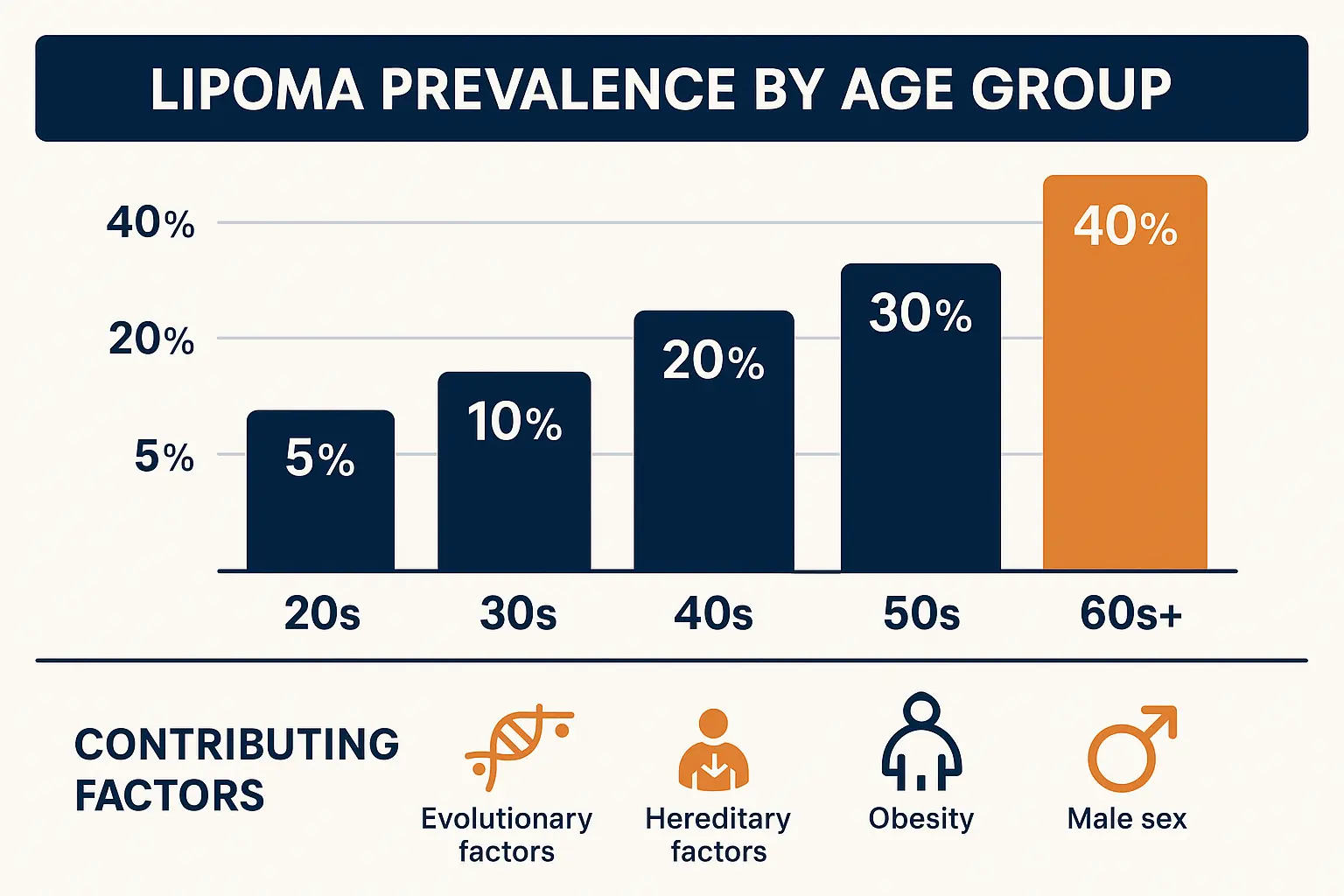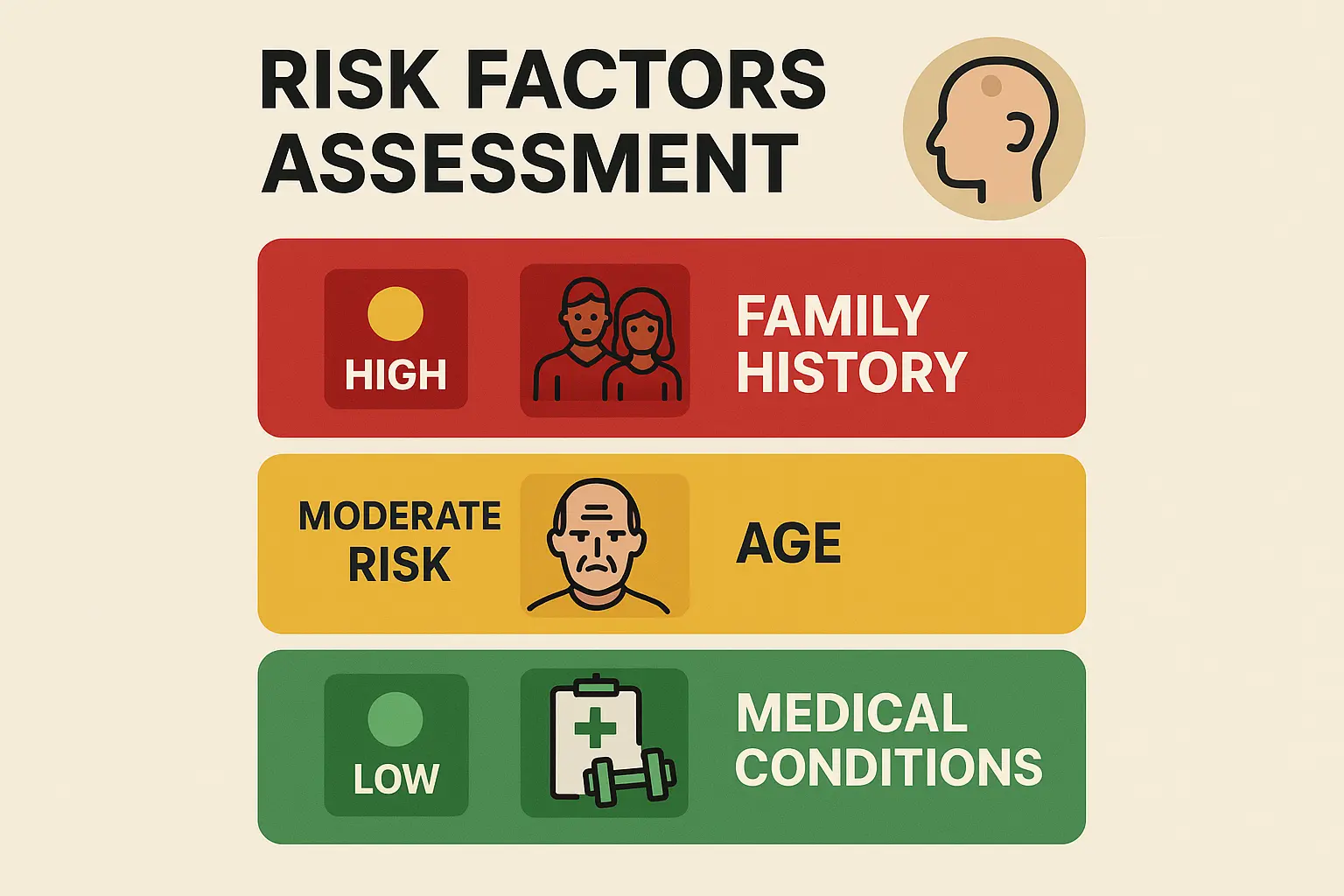Imagine looking in the mirror one morning and noticing a small, soft bump on your forehead that wasn't there before. While this discovery might cause initial concern, there's a good chance you're dealing with a lipoma—one of the most common benign skin growths that can appear anywhere on the body, including the forehead. Understanding lipoma on forehead causes can help ease anxiety and guide you toward appropriate treatment options.
Lipomas are surprisingly common, affecting approximately 1 in 100 people worldwide. These fatty tissue growths can develop at any age but are most frequently diagnosed in adults between 40 and 60 years old. When they appear on visible areas like the forehead, they often prompt questions about their origin, safety, and treatment options.
• Genetic factors play the primary role in lipoma development, with family history being the strongest predictor
• Age and hormonal changes significantly influence when and where lipomas appear on the forehead
• Minor trauma or injury to the forehead area may trigger lipoma formation in predisposed individuals
• Most forehead lipomas are completely benign and pose no serious health risks • Professional evaluation is essential for proper diagnosis and to rule out other skin conditions
A lipoma is a benign tumor composed of mature fat cells (adipocytes) surrounded by a thin, fibrous capsule. These growths develop when fat cells multiply and cluster together beneath the skin's surface. Unlike malignant tumors, lipomas grow slowly and remain contained within their capsule, making them relatively harmless.
When lipomas form on the forehead, they typically appear as:
The formation of a lipoma on forehead follows a predictable pattern:

Hereditary factors represent the most significant cause of lipoma development. Research indicates that approximately 20-30% of people with lipomas have a family history of these growths. Several genetic conditions increase lipoma risk:
Familial Multiple Lipomatosis
Dercum's Disease (Adiposis Dolorosa)
Madelung's Disease
Aging processes significantly influence lipoma development on the forehead. As people age, several changes occur that increase lipoma risk:
Age GroupLipoma PrevalenceKey Factors20-30 years5-10%Hormonal changes, genetic activation30-40 years15-20%Metabolic shifts, lifestyle factors40-50 years25-30%Peak occurrence, cellular aging50+ years20-25%Hormone decline, accumulated factors
Cellular aging affects fat cell behavior, making them more prone to abnormal multiplication. The forehead area, being exposed to environmental factors throughout life, may be particularly susceptible to age-related lipoma formation.
Hormonal fluctuations play a crucial role in lipoma development, particularly on the forehead where hormone-sensitive tissues are present.
Estrogen and Progesterone
Thyroid Hormones
Growth Hormone
Physical trauma to the forehead area can trigger lipoma formation in predisposed individuals. This phenomenon, known as post-traumatic lipoma development, occurs through several mechanisms:
Blunt Force Trauma
Repetitive Minor Trauma
The trauma doesn't directly cause the lipoma but may activate dormant genetic tendencies or disrupt normal tissue architecture, leading to abnormal fat cell growth.
Several metabolic conditions and lifestyle factors contribute to lipoma development on the forehead:
Diabetes and Insulin Resistance
Obesity and Weight Fluctuations
Dietary Factors
Environmental exposures may contribute to lipoma formation on the forehead:
Several underlying medical conditions increase the likelihood of developing forehead lipomas:
Liver Disease
Glucose Metabolism Disorders
Certain medications may influence lipoma formation:

Understanding risk factors helps identify individuals more likely to develop forehead lipomas:
While most forehead lipomas are benign, certain situations warrant professional evaluation at specialized clinics:
Professional healthcare providers can perform proper diagnostic procedures and discuss treatment options based on individual circumstances.

Healthcare professionals use several diagnostic methods to confirm lipoma diagnosis:
Visual Inspection
Palpation
When necessary, additional diagnostic procedures may be employed:
Ultrasound Imaging
MRI Scanning
Biopsy Procedures
Many forehead lipomas require no immediate treatment:
Observation Protocol
Lifestyle Modifications
When treatment is necessary, several surgical options are available through professional medical teams:
Excision Surgery
Liposuction
Minimal Incision Techniques

While genetic predisposition cannot be changed, several strategies may help reduce lipoma risk:
Forehead lipomas can impact self-confidence and appearance:
Makeup Techniques
Hairstyle Adaptations
Emotional impact of visible lipomas should not be underestimated:

Most forehead lipomas are completely benign and pose no health risks. However, any new growth should be evaluated by a healthcare professional to confirm the diagnosis and rule out other conditions.
The transformation of a lipoma into a malignant tumor (liposarcoma) is extremely rare, occurring in less than 1% of cases. Regular monitoring helps detect any concerning changes.
While genetic predisposition increases risk, having lipomas doesn't guarantee that children will develop them. The inheritance pattern is complex and involves multiple factors.
Most lipomas grow very slowly over months or years. Rapid growth over weeks should prompt immediate medical evaluation.
While no specific diet prevents lipomas, maintaining a healthy weight and following an anti-inflammatory diet may help reduce risk factors.
For more information about lipoma treatment and management, visit our comprehensive FAQ section or explore our blog for additional resources.
Scientific investigations into lipoma causes continue to evolve:
Genetic Studies
Molecular Research
Innovative treatment approaches are being developed:
Non-Surgical Options
Minimally Invasive Procedures
Understanding lipoma on forehead causes empowers individuals to make informed decisions about their health and treatment options. While genetic predisposition remains the primary factor, age, hormonal influences, trauma, and lifestyle factors all contribute to lipoma development. Most forehead lipomas are benign and pose no serious health risks, but professional evaluation ensures proper diagnosis and appropriate management.
The key to managing forehead lipomas lies in early recognition, proper medical assessment, and informed decision-making about treatment options. Whether choosing conservative observation or surgical intervention, working with qualified healthcare professionals ensures the best possible outcomes.
For those concerned about forehead lipomas, remember that effective treatments are available, and most people can achieve excellent cosmetic and functional results. Don't hesitate to contact qualified medical professionals to discuss your specific situation and explore the most appropriate treatment approach for your needs.
Taking proactive steps toward understanding and managing lipomas demonstrates good health stewardship and can provide peace of mind for both current concerns and future prevention strategies.